Xin Zheng
OASIS: Harnessing Diffusion Adversarial Network for Ocean Salinity Imputation using Sparse Drifter Trajectories
Aug 29, 2025Abstract:Ocean salinity plays a vital role in circulation, climate, and marine ecosystems, yet its measurement is often sparse, irregular, and noisy, especially in drifter-based datasets. Traditional approaches, such as remote sensing and optimal interpolation, rely on linearity and stationarity, and are limited by cloud cover, sensor drift, and low satellite revisit rates. While machine learning models offer flexibility, they often fail under severe sparsity and lack principled ways to incorporate physical covariates without specialized sensors. In this paper, we introduce the OceAn Salinity Imputation System (OASIS), a novel diffusion adversarial framework designed to address these challenges.
Explain Before You Answer: A Survey on Compositional Visual Reasoning
Aug 24, 2025Abstract:Compositional visual reasoning has emerged as a key research frontier in multimodal AI, aiming to endow machines with the human-like ability to decompose visual scenes, ground intermediate concepts, and perform multi-step logical inference. While early surveys focus on monolithic vision-language models or general multimodal reasoning, a dedicated synthesis of the rapidly expanding compositional visual reasoning literature is still missing. We fill this gap with a comprehensive survey spanning 2023 to 2025 that systematically reviews 260+ papers from top venues (CVPR, ICCV, NeurIPS, ICML, ACL, etc.). We first formalize core definitions and describe why compositional approaches offer advantages in cognitive alignment, semantic fidelity, robustness, interpretability, and data efficiency. Next, we trace a five-stage paradigm shift: from prompt-enhanced language-centric pipelines, through tool-enhanced LLMs and tool-enhanced VLMs, to recently minted chain-of-thought reasoning and unified agentic VLMs, highlighting their architectural designs, strengths, and limitations. We then catalog 60+ benchmarks and corresponding metrics that probe compositional visual reasoning along dimensions such as grounding accuracy, chain-of-thought faithfulness, and high-resolution perception. Drawing on these analyses, we distill key insights, identify open challenges (e.g., limitations of LLM-based reasoning, hallucination, a bias toward deductive reasoning, scalable supervision, tool integration, and benchmark limitations), and outline future directions, including world-model integration, human-AI collaborative reasoning, and richer evaluation protocols. By offering a unified taxonomy, historical roadmap, and critical outlook, this survey aims to serve as a foundational reference and inspire the next generation of compositional visual reasoning research.
Adaptive Sentencing Prediction with Guaranteed Accuracy and Legal Interpretability
May 20, 2025Abstract:Existing research on judicial sentencing prediction predominantly relies on end-to-end models, which often neglect the inherent sentencing logic and lack interpretability-a critical requirement for both scholarly research and judicial practice. To address this challenge, we make three key contributions:First, we propose a novel Saturated Mechanistic Sentencing (SMS) model, which provides inherent legal interpretability by virtue of its foundation in China's Criminal Law. We also introduce the corresponding Momentum Least Mean Squares (MLMS) adaptive algorithm for this model. Second, for the MLMS algorithm based adaptive sentencing predictor, we establish a mathematical theory on the accuracy of adaptive prediction without resorting to any stationarity and independence assumptions on the data. We also provide a best possible upper bound for the prediction accuracy achievable by the best predictor designed in the known parameters case. Third, we construct a Chinese Intentional Bodily Harm (CIBH) dataset. Utilizing this real-world data, extensive experiments demonstrate that our approach achieves a prediction accuracy that is not far from the best possible theoretical upper bound, validating both the model's suitability and the algorithm's accuracy.
A Label-Free Heterophily-Guided Approach for Unsupervised Graph Fraud Detection
Feb 18, 2025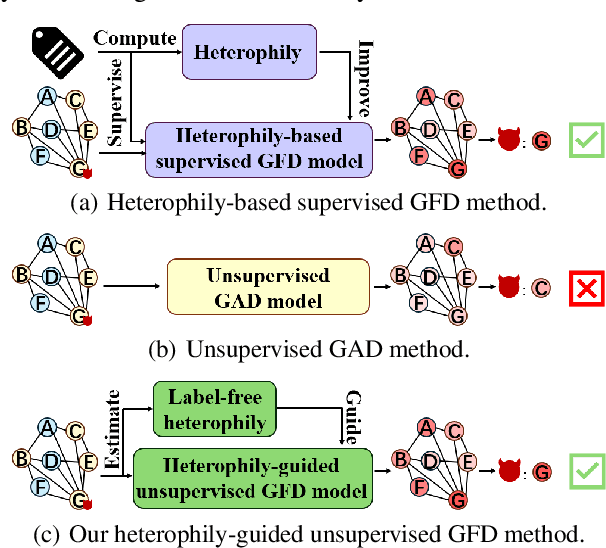

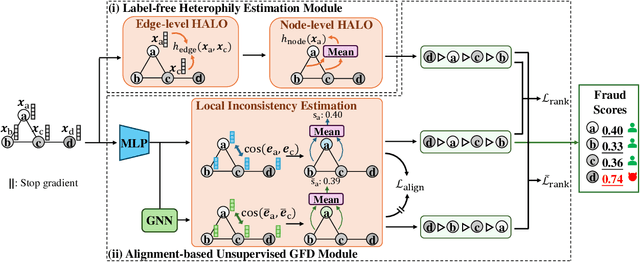

Abstract:Graph fraud detection (GFD) has rapidly advanced in protecting online services by identifying malicious fraudsters. Recent supervised GFD research highlights that heterophilic connections between fraudsters and users can greatly impact detection performance, since fraudsters tend to camouflage themselves by building more connections to benign users. Despite the promising performance of supervised GFD methods, the reliance on labels limits their applications to unsupervised scenarios; Additionally, accurately capturing complex and diverse heterophily patterns without labels poses a further challenge. To fill the gap, we propose a Heterophily-guided Unsupervised Graph fraud dEtection approach (HUGE) for unsupervised GFD, which contains two essential components: a heterophily estimation module and an alignment-based fraud detection module. In the heterophily estimation module, we design a novel label-free heterophily metric called HALO, which captures the critical graph properties for GFD, enabling its outstanding ability to estimate heterophily from node attributes. In the alignment-based fraud detection module, we develop a joint MLP-GNN architecture with ranking loss and asymmetric alignment loss. The ranking loss aligns the predicted fraud score with the relative order of HALO, providing an extra robustness guarantee by comparing heterophily among non-adjacent nodes. Moreover, the asymmetric alignment loss effectively utilizes structural information while alleviating the feature-smooth effects of GNNs.Extensive experiments on 6 datasets demonstrate that HUGE significantly outperforms competitors, showcasing its effectiveness and robustness. The source code of HUGE is at https://github.com/CampanulaBells/HUGE-GAD.
FedSA: A Unified Representation Learning via Semantic Anchors for Prototype-based Federated Learning
Jan 09, 2025Abstract:Prototype-based federated learning has emerged as a promising approach that shares lightweight prototypes to transfer knowledge among clients with data heterogeneity in a model-agnostic manner. However, existing methods often collect prototypes directly from local models, which inevitably introduce inconsistencies into representation learning due to the biased data distributions and differing model architectures among clients. In this paper, we identify that both statistical and model heterogeneity create a vicious cycle of representation inconsistency, classifier divergence, and skewed prototype alignment, which negatively impacts the performance of clients. To break the vicious cycle, we propose a novel framework named Federated Learning via Semantic Anchors (FedSA) to decouple the generation of prototypes from local representation learning. We introduce a novel perspective that uses simple yet effective semantic anchors serving as prototypes to guide local models in learning consistent representations. By incorporating semantic anchors, we further propose anchor-based regularization with margin-enhanced contrastive learning and anchor-based classifier calibration to correct feature extractors and calibrate classifiers across clients, achieving intra-class compactness and inter-class separability of prototypes while ensuring consistent decision boundaries. We then update the semantic anchors with these consistent and discriminative prototypes, which iteratively encourage clients to collaboratively learn a unified data representation with robust generalization. Extensive experiments under both statistical and model heterogeneity settings show that FedSA significantly outperforms existing prototype-based FL methods on various classification tasks.
Brain-to-Text Benchmark '24: Lessons Learned
Dec 23, 2024

Abstract:Speech brain-computer interfaces aim to decipher what a person is trying to say from neural activity alone, restoring communication to people with paralysis who have lost the ability to speak intelligibly. The Brain-to-Text Benchmark '24 and associated competition was created to foster the advancement of decoding algorithms that convert neural activity to text. Here, we summarize the lessons learned from the competition ending on June 1, 2024 (the top 4 entrants also presented their experiences in a recorded webinar). The largest improvements in accuracy were achieved using an ensembling approach, where the output of multiple independent decoders was merged using a fine-tuned large language model (an approach used by all 3 top entrants). Performance gains were also found by improving how the baseline recurrent neural network (RNN) model was trained, including by optimizing learning rate scheduling and by using a diphone training objective. Improving upon the model architecture itself proved more difficult, however, with attempts to use deep state space models or transformers not yet appearing to offer a benefit over the RNN baseline. The benchmark will remain open indefinitely to support further work towards increasing the accuracy of brain-to-text algorithms.
Critic-CoT: Boosting the reasoning abilities of large language model via Chain-of-thoughts Critic
Aug 29, 2024Abstract:Self-critic has become an important mechanism for enhancing the reasoning performance of LLMs. However, current approaches mainly involve basic prompts without further training, which tend to be over-simplified, leading to limited accuracy.Moreover, there is a lack of in-depth investigation of the relationship between LLM's ability to criticism and its task-solving performance.To address these issues, we propose Critic-CoT, a novel framework that pushes LLMs toward System-2-like critic capability, via step-wise CoT reasoning format and distant-supervision data construction, without the need for human annotation. Experiments on GSM8K and MATH show that via filtering out invalid solutions or iterative refinement, our enhanced model boosts task-solving performance, which demonstrates the effectiveness of our method. Further, we find that training on critique and refinement alone improves the generation. We hope our work could shed light on future research on improving the reasoning and critic ability of LLMs.
Apple Intelligence Foundation Language Models
Jul 29, 2024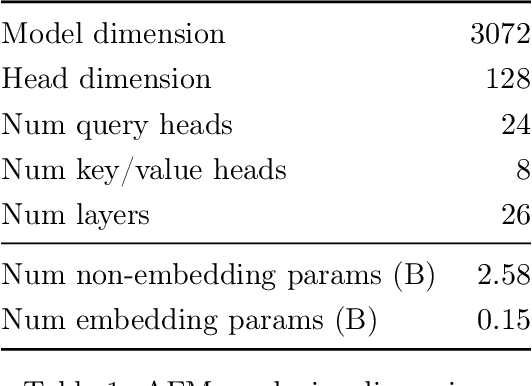
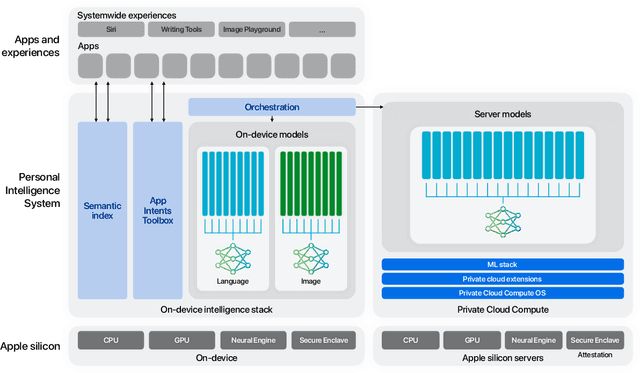

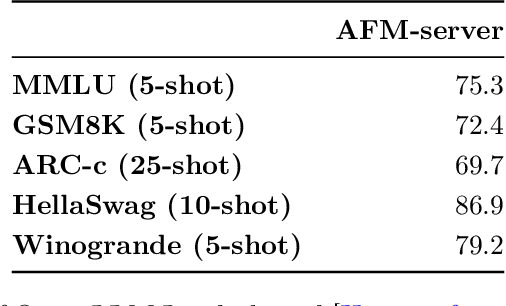
Abstract:We present foundation language models developed to power Apple Intelligence features, including a ~3 billion parameter model designed to run efficiently on devices and a large server-based language model designed for Private Cloud Compute. These models are designed to perform a wide range of tasks efficiently, accurately, and responsibly. This report describes the model architecture, the data used to train the model, the training process, how the models are optimized for inference, and the evaluation results. We highlight our focus on Responsible AI and how the principles are applied throughout the model development.
ORLM: Training Large Language Models for Optimization Modeling
May 30, 2024



Abstract:Large Language Models (LLMs) have emerged as powerful tools for tackling complex Operations Research (OR) problem by providing the capacity in automating optimization modeling. However, current methodologies heavily rely on prompt engineering (e.g., multi-agent cooperation) with proprietary LLMs, raising data privacy concerns that could be prohibitive in industry applications. To tackle this issue, we propose training open-source LLMs for optimization modeling. We identify four critical requirements for the training dataset of OR LLMs, design and implement OR-Instruct, a semi-automated process for creating synthetic data tailored to specific requirements. We also introduce the IndustryOR benchmark, the first industrial benchmark for testing LLMs on solving real-world OR problems. We apply the data from OR-Instruct to various open-source LLMs of 7b size (termed as ORLMs), resulting in a significantly improved capability for optimization modeling. Our best-performing ORLM achieves state-of-the-art performance on the NL4OPT, MAMO, and IndustryOR benchmarks. Our code and data are available at \url{https://github.com/Cardinal-Operations/ORLM}.
Online GNN Evaluation Under Test-time Graph Distribution Shifts
Mar 15, 2024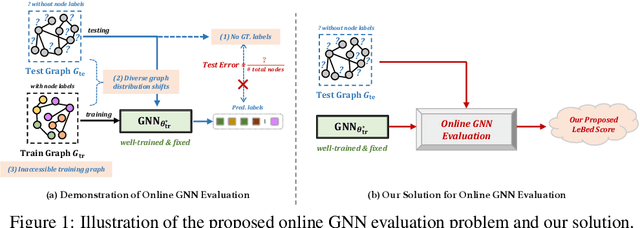
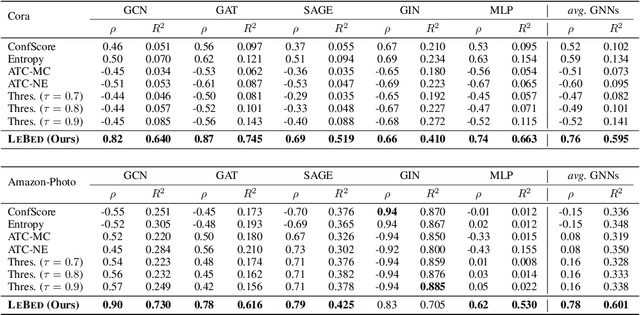
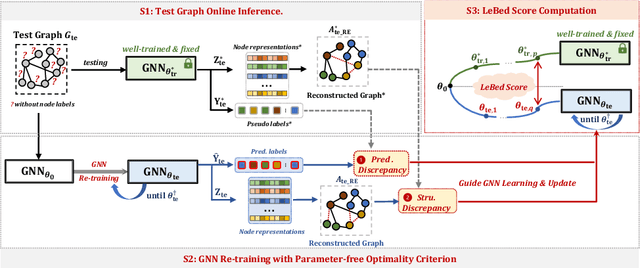
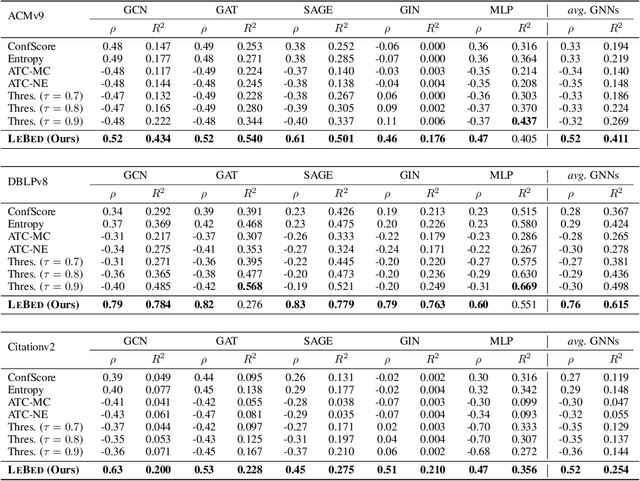
Abstract:Evaluating the performance of a well-trained GNN model on real-world graphs is a pivotal step for reliable GNN online deployment and serving. Due to a lack of test node labels and unknown potential training-test graph data distribution shifts, conventional model evaluation encounters limitations in calculating performance metrics (e.g., test error) and measuring graph data-level discrepancies, particularly when the training graph used for developing GNNs remains unobserved during test time. In this paper, we study a new research problem, online GNN evaluation, which aims to provide valuable insights into the well-trained GNNs's ability to effectively generalize to real-world unlabeled graphs under the test-time graph distribution shifts. Concretely, we develop an effective learning behavior discrepancy score, dubbed LeBeD, to estimate the test-time generalization errors of well-trained GNN models. Through a novel GNN re-training strategy with a parameter-free optimality criterion, the proposed LeBeD comprehensively integrates learning behavior discrepancies from both node prediction and structure reconstruction perspectives. This enables the effective evaluation of the well-trained GNNs' ability to capture test node semantics and structural representations, making it an expressive metric for estimating the generalization error in online GNN evaluation. Extensive experiments on real-world test graphs under diverse graph distribution shifts could verify the effectiveness of the proposed method, revealing its strong correlation with ground-truth test errors on various well-trained GNN models.
 Add to Chrome
Add to Chrome Add to Firefox
Add to Firefox Add to Edge
Add to Edge